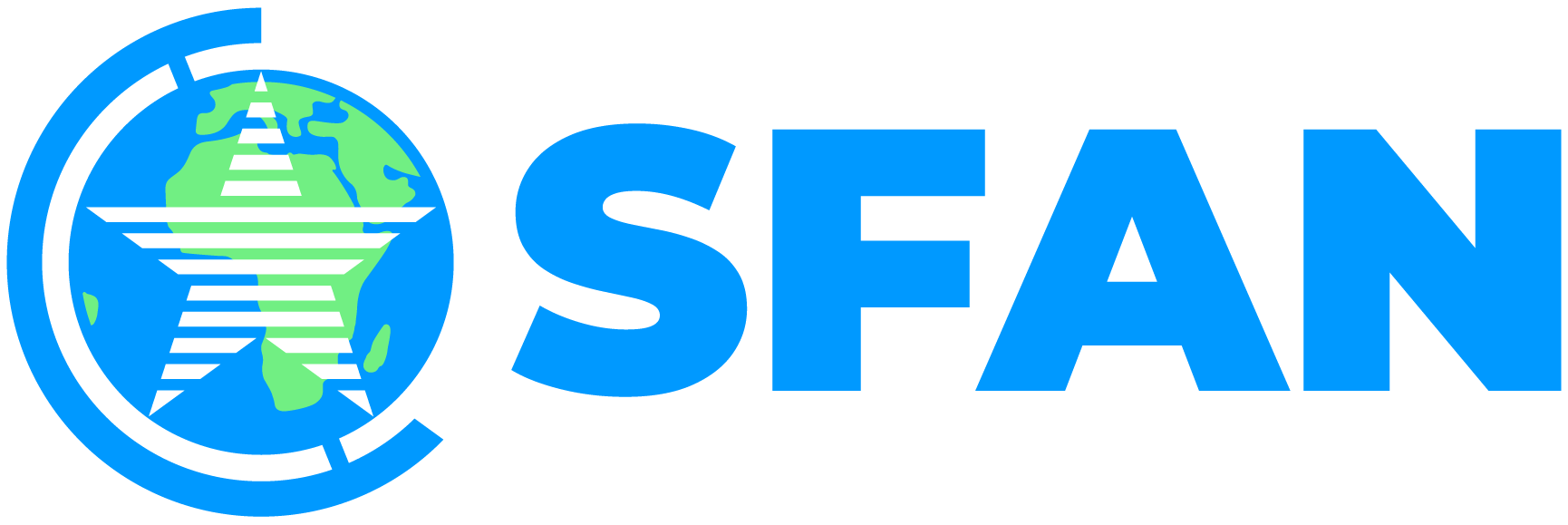SFAN Breakfast Meeting 4: Key Takeaways on Marketing, Branding, and Budgets
by Nashilu Mouen · Business advice
Sat, 06 Aug 2016 · 3 minute read
Share

On June 24th, 2016, SFAN brought marketing and branding minds from across Ghana together, in Accra, to discuss the startup pipeline from lead to a new customer, repeat customer, and, finally, tribe member.
The branding panel featured Jemila Abdulai of Circumspecte.com, Rodney Quarcoo of Magic Unltd, Sadiq Abdulai Abu of MUSE Africa, and Lakeshia Marie of Ford Communications, while the marketing portion included Princewill Omorogiuwa of 3rd Floor Digital, Kajsa Hallberg Adu of Blogging Ghana and Lenny Simmons of ClakImpressions.
With a little pause and reflection in the week since the event, these are Dorodrum’s top 3 takeaways from SFAN’s latest Future Executives Business Breakfast Meeting (FEBBM4) focused on marketing, branding, and budgets. Read a recap of the previous SFAN breakfast meeting.
1. You’re Only as Good as Your Roadmap
“You market to create brand awareness. But if you don’t know who you are, you can’t know what you are creating awareness about.”

Expressed most succinctly by Lenny Simmons, CEO of ClakImpressions, every panelist at FEBBM4 underscored the importance of developing a roadmap laying out the core values for your startup to maximize your relationships with consumers in the marketplace.
But a roadmap is not a fixed or defined thing. Instead, it is a promise to your team and to consumers about the firm into which they are buying. It is the essence and identity of your startup and the fundamental reason that customers believe in the product you are selling them — and return to buy again. In Steve Jobs’ much anthologized 1997 words, “Though the product may alter, the core values should never change.”
While Sadiq Abdulai Abu spoke to Muse AFRICA’s extensive brand workshop process, engaging the founding team to develop a roadmap, tagline, logo, and brand package before launching their platform, Jemila Abdulai spoke about her trajectory scaling a personal blog to a publication, developing her brand identity primarily for the purpose of the platform’s growth.
“Unlike Saddiq,” she explains, “I didn’t go out and do hardcore brand research because Circumspecte started a personal blog. The branding was essentially for my identity. When I decided to open it up, making it moreover that I was focusing on Africa and not only Ghana, I found that I needed to gradually distance myself from the platform.”

2. Deliver on your Paper Promise
A strong brand is two-fold. It is at once the paper promise made to your customer (the value proposition you offer them and the colors, fonts, logos, and taglines you use to express it) and the experience that the consumer has with you every step of the way. If the packaging is the promise, the delivery is the experience.
Speaking from his journey growing photography agency RQV into a branding and communications agency, Magic Unltd CEO Rodney Quarcco is familiar with the importance and long-term impact of the brand experience. “As much as you try and tell your target market who you are and what you are it goes beyond that. Your brand is not just the color, it is the association. It is how people perceive you and experience you, as opposed to what you want them to see.”
It is easy to consistently deliver on your promise. And that is ok.
If a critical part of branding is consumer interaction and quality delivery, setting customer expectations and meeting them is key. As a startup constantly looking to build a larger network and acquire more business and customers, this portion of quality can quickly become tricky.
For Jemila, Rodney, and Sadiq speaking on their ability to maintain a quality experience for their customers, delivering on the brand promise meant making several different choices all centered around the much-forgotten fact that the decision-making ends with you.
“If you make your projections and you see you may fall short, you must anticipate that this may happen and mitigate it,” Jemila explain. “You are the one making the rules. Just because there is a certain demand, does not mean you should shift the quality of the company too. You might get new people but your original audience will leave.”
As with many startups, for Rodney, scaling RQV Photography meant hiring and training a team to help tackle the immense amount of work he was receiving. Alongside building a larger team, communication, again, was a critical point in maintaining quality. “You can’t always keep your promise when you are short-staffed, and if you falter how do you come back? You cannot shadow and follow each of your team members so you do what you can and do the things that work. Above all, be honest with yourself, and with your client. Hopefully, they will empathize, but communication is Key and it is essential to be proactive and not reactive.”

3. Branding can Balance the Budget
Marketing does not always have to mean hard-earned Cedis down the sink, as strong and coherent brands help trim services when necessary and bypass more costly traditional forms of advertising.
For MUSE Africa’s case, while reviewing an unsustainable sales strategy the strength of their brand guided the restructuring process and gave them the confidence to trim back their production efforts. “When we realized that we had to we scale back, our roadmap kept us in line, and the brand that we had established as our baseline.
It told us what we couldn’t compromise on and informed our limits on restructuring.” Working within these confines, Sadiq successfully led his in trimming back their costs and their sales strategy, without compromising on their quality.

For many startups and SMEs, brand coherence and quality are all the more important as advertising budgets are unforgiving, making customer service the best and cheapest resource for reaching a larger market.
As Kajsa Hallberg Adu, Co-founder of Blogging Ghana, and Princewill Omorogiuwa, Founder of Simon Page College of Marketing, point out, “there is nothing that can advertise better than your customer service and you can truly advertise all you want, but if your offering is crap, you can win a customer today and lose them tomorrow. And today, Social Media is word of mouth.”
In effect, for every Google Adword campaign you run or digital ad campaign you purchase, there is a free alternative that may just secure the push that you need to grow your customer base a little wider and deeper — be it through content marketing on LinkedIn, content creation through brand blogging, on regular social media postings.

You cannot aim further than you can see.
As mentioned in passing, Rodney’s sentiment is underlying but central to the fourth Future Executives Business Breakfast Meeting.
Branding and marketing are not afterthoughts that can simply be tacked on to the end of a venture, a final shot to secure a sale. Yes, they are the core of the products that we sell to our consumers, but most importantly they are our expression of the vision and ambition that we sell to ourselves — and the level of achievement to which we will be accountable.
You cannot know where you’re going if you don’t know where you’re coming from.
In a world drowning in competition and heavy in distraction, your relationship with your customer and tribe is key, but your relationship with the company that you create, and the team that you lead is just as critical. Take your time with it.

